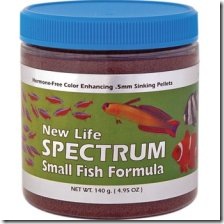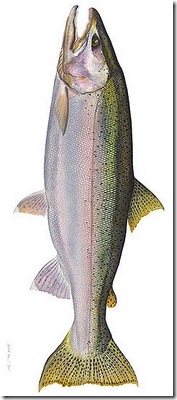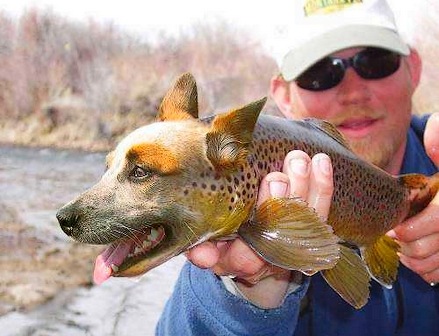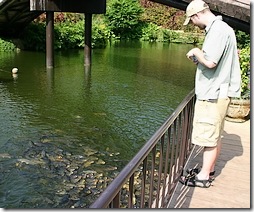 It’s a great subject worthy of much lampooning and bitter vitriol, but us sportsmen have no say in the outcome, will endure largely in silence, and be the first to point fingers when the inevitable occurs.
It’s a great subject worthy of much lampooning and bitter vitriol, but us sportsmen have no say in the outcome, will endure largely in silence, and be the first to point fingers when the inevitable occurs.
Call it “Frankenfish” or whatever comes to mind, but the truth is the majority of the world’s population aren’t fishermen and gets hungry three or four times a day and that dictates our fate.
I don’t suggest that I like the outcome, I’m resigned to it.
Folks that buy palatial houses by the river think the surroundings cool, perhaps some have a lonesome and expensive boat moored at their dock, many admire (or resent) the sight of us flailing in the water – but they don’t fish, don’t share our devotion to their survival, and like the trappings of wealth as much as we do.
They vote, fish don’t – end of story.
Rather than pound chest and feel violated about the pending FDA ruling on genetically modified salmon, what grow twice as quick in half the time, recognize that this is one of only two possible outcomes in the larger freshwater/ocean sustainable fisheries issue.
There are too many people on the planet, most like fish – all of them like to eat, and as we’ve alternately slaughtered or shat on all the natural surroundings and indigenous fish, we are about to eat what we’ve sown.
Our conservation organizations are underfunded and relatively powerless. Able to avert a dam or protest releases from a big power company, get one or two small creeks declared special, and they’re done. They cannot sustain the “special,” leaving the creek and its regulations to the hordes of anglers that destroy much of the bank and grind the aquatic population into oblivion just by weight of numbers.
It’s part of our history and part inheritance. Your Dad, his Poppa, and all them hardy types coming across the prairie in Conestoga wagons were fearsome killers. Surrounded by limitless wildlife they treated it as such – and kilt, built, or diverted all that precious infrastructure to their own ends, leaving us and future generations to clean up.
We didn’t – as that’s damn hard work, rather we invented things that harvested less fish even quicker, approximating the killing spree of our ancestors. Tales of conquest and adventure made us push further into the Pristine (shrinking it with every step) to find what few stocks remained in out of the way places like Mongolia, Kamchatka or Alaska, and we blew hell outta them too.
… as that weight of numbers thing is growing.
Then we gash ourselves and moan about how our Playstation-absorbed kid, who hasn’t budged off the couch in a fortnight, is going to be deprived of his birthright.
Proof positive we have learned nothing.
Bringing the existing stocks back will take a couple hundred thousand years. It probably took a couple million to invent salmon and their watershed in the first place, figuring science can give it a good nudge, perhaps 20 or so generations from now we can have something close …
… but that implies we bulldoze all those palatial homes, ban jet skis, restore the forested acres of each headwater, and evict a large, monied, and vocal chunk of the population from their ancestral estates.
… which is never going to happen, because you want Junior’s playstation to hum contentedly, otherwise you’d have to converse with the witless SOB, or worse find him a job.
So … we’re back at option two, grow the equivalent muscle mass of the ancient runs to feed a burgeoning world population, without using any of the original acres, streams, forests, oceans, or tidewaters.
As the most efficient process is test tube, that’s where we’re headed. Stem cell research has already produced both rudimentary flesh and muscle fiber, all that remains is to juice the cell replication so it produces a ton or more flaccid and tasteless flesh per hour, per minute, or whatever scale is needed.
… so your kid can whine and turn up his nose at his birthright.
In the interim we’ll stick big needles in animal flesh and zap them with all manner of caustic stuff so you can order sushi.
Some of the result will escape, just as the genetically engineered Roundup resistant crops have done, and if we don’t screw everything forever, or release something sentient that dines on us, we’ll slowly learn from many mistakes.
Rather than steep yourself in angry apoplexy, recognize that you’ve earned this birthright, and despite all of the hideous inequities, no one is giving up their homes, shopping malls, or movie theaters, to restore fish to prior levels.
… and if that’s not enough and you insist on saving some fish, I suggest you give up the sport entirely, as that will save some few, mark you as a selfless sporting martyr, as well as make more for the rest of us.
Fixing it is out of the question, Science is going to have their way with the Old Gal, and nothing you say or do will matter.
Resigned to it all, I’ll cling to the hope that through this process we may be able to salvage one or two small bones that might make our plight a bit easier.
Perhaps the conservation groups with their miniscule budgets can commission some type of boutique fish that survives in warming-water, resistant to chemicals and dines on oil slicks and auto exhaust – but fights like a bulldog when hooked.
That may be enough to keep a small cadre of us anglers content into the next couple of centuries, so that we can exploit anything found swimming in pure ammonia when we land on Mars.
As it’s certain that even though we acknowledge the debris field we’re wandering in today, we’ve not changed our spots one iota.
 I suppose the good news is that none of us has cracked under the pressure and sent pictures of The Family Jewels to some anonymous campus sweetheart, but that’s coming.
I suppose the good news is that none of us has cracked under the pressure and sent pictures of The Family Jewels to some anonymous campus sweetheart, but that’s coming.
 Total dollar value for all farmed
Total dollar value for all farmed 
 Research on Oregon’s Hood River steelhead population suggests a bit of good news may be in the offing. Wild trout inhabiting the river are the source of 40% of the genetic makeup of its steelhead brethren, which is neatly offsetting the “watering down” of genetic makeup due to hatchery fish.
Research on Oregon’s Hood River steelhead population suggests a bit of good news may be in the offing. Wild trout inhabiting the river are the source of 40% of the genetic makeup of its steelhead brethren, which is neatly offsetting the “watering down” of genetic makeup due to hatchery fish. The farmed fish industry may have gotten a bit of a reprieve from all the heat associated with the Frankenfish, apparently UC Davis researchers claim that while farmed fish are responsible for much of the sea lice the fish must navigate through – there’s less evidence those self-same lice are responsible for the collapse of the Pink Salmon population of Western Canada.
The farmed fish industry may have gotten a bit of a reprieve from all the heat associated with the Frankenfish, apparently UC Davis researchers claim that while farmed fish are responsible for much of the sea lice the fish must navigate through – there’s less evidence those self-same lice are responsible for the collapse of the Pink Salmon population of Western Canada. In the 80’s us lay scientists were full of ourselves. We’d embraced the fact that trout ate bugs, that Latin made us sound really intelligent, and the more syllables and body parts we could string together made us irresistible in a social setting.
In the 80’s us lay scientists were full of ourselves. We’d embraced the fact that trout ate bugs, that Latin made us sound really intelligent, and the more syllables and body parts we could string together made us irresistible in a social setting.

 We can only assume a similar mechanism exists in fresh water, innocent fish lured away from the safety of fallen logs and deep pools to the shallow end where they can be caught.
We can only assume a similar mechanism exists in fresh water, innocent fish lured away from the safety of fallen logs and deep pools to the shallow end where they can be caught.